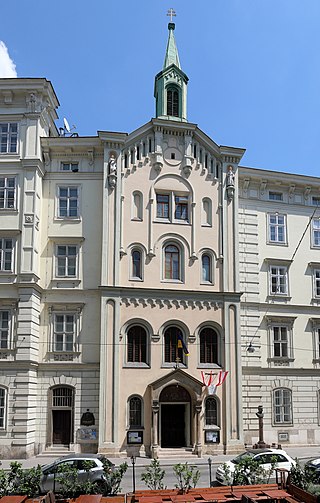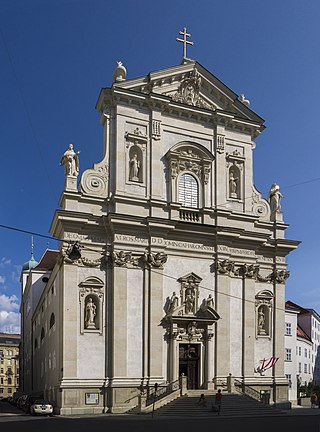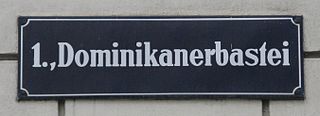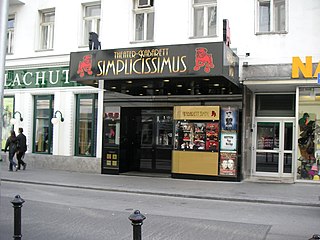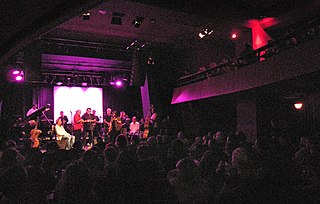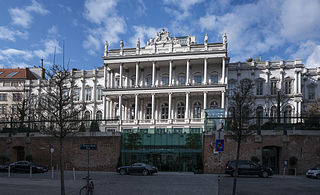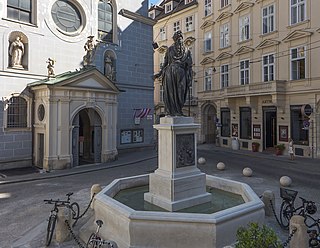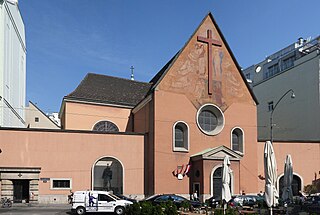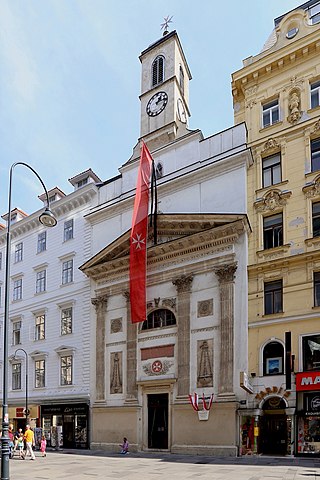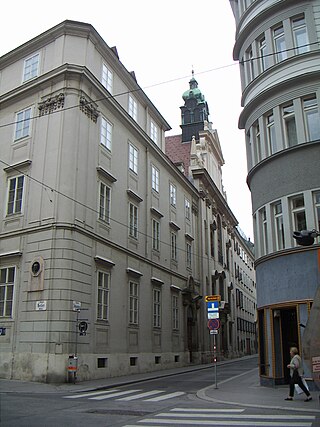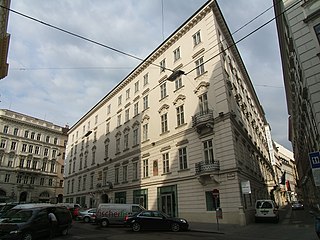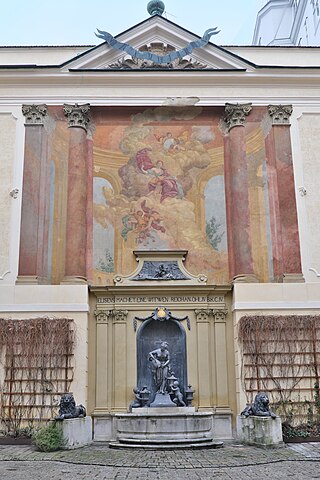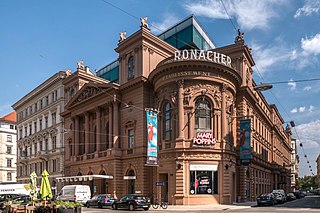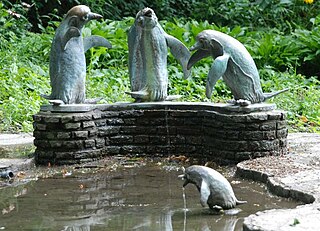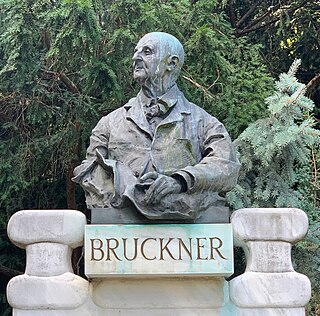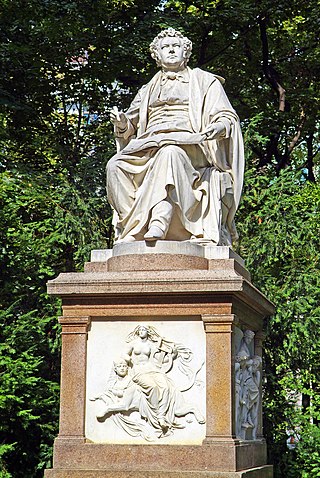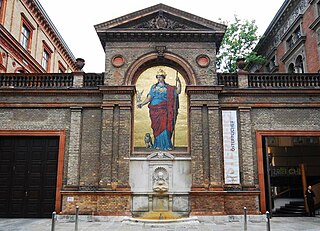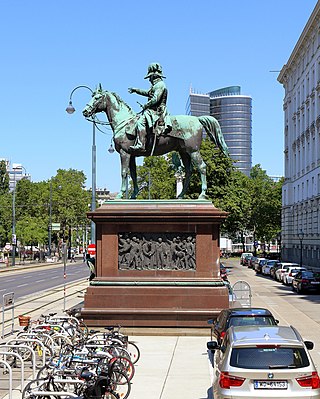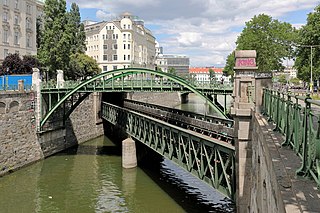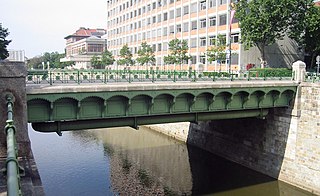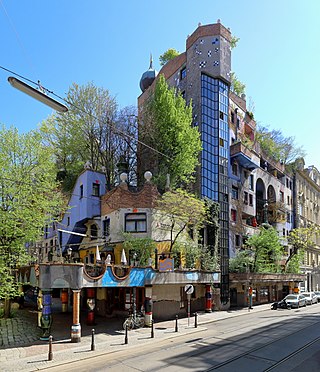Self-guided Sightseeing Tour #2 in Vienna, Austria
Legend
Guided Free Walking Tours
Book free guided walking tours in Vienna.
Guided Sightseeing Tours
Book guided sightseeing tours and activities in Vienna.
Tour Facts
9.4 km
252 m
Experience Vienna in Austria in a whole new way with our free self-guided sightseeing tour. This site not only offers you practical information and insider tips, but also a rich variety of activities and sights you shouldn't miss. Whether you love art and culture, want to explore historical sites or simply want to experience the vibrant atmosphere of a lively city - you'll find everything you need for your personal adventure here.
Activities in ViennaIndividual Sights in ViennaSight 1: Volkstheater
The Volkstheater in Vienna was founded in 1889 by request of the citizens of Vienna, amongst them the dramatist Ludwig Anzengruber and the furniture manufacturer Thonet, in order to offer a popular counter weight to the Hofburgtheater. It was erected according to designs by Ferdinand Fellner and Hermann Helmer, who attempted to reconcile their plans with historicism. It is located in Neubau, the seventh district of Vienna.
Sight 2: MuseumsQuartier
Get Ticket*The Museumsquartier (MQ) is an area of 9 ha in the 7th district of the city of Vienna, Austria.
Sight 3: Tritonen- und Najadenbrunnen
On Maria-Theresien-Platz between the Natural History Museum and the Kunsthistorisches Museum in Vienna's 1st district, Innere Stadt, there are four Triton and Naiad fountains in addition to the central Maria Theresa Monument.
Sight 4: Maria Theresia Memorial
The Maria Theresa Memorial is one of the most important monuments of the Habsburg monarchy in Vienna. It commemorates Empress Maria Theresa, who ruled the Habsburg monarchy from 1740 to 1780. The monument stands since 1888 on the Maria-Theresien-Platz between the Art History Museum, which opened in 1891, and the Natural History Museum, which opened in 1889.
Sight 5: Palais Epstein
Palais Epstein is a Ringstraßenpalais in Vienna, Austria. It was built for the industrialist and banker Gustav Ritter von Epstein. The architect was Theophil Freiherr von Hansen, who also designed the adjacent Austrian Parliament Building. Unlike traditional Baroque noble palaces in Vienna, Palais Epstein was built in the late 19th century and is therefore considered a Ringstraßenpalais. It is up to five storeys high and built in the neo-Renaissance style typical of its time.
Sight 6: Denkmal der Exekutive
The Monument to the Executive is a monument to the executive employees killed in the line of duty and is located next to the Outer Castle Gate in Vienna's 1st district, Innere Stadt. It was inaugurated in 2002 by Federal President Thomas Klestil.
Sight 7: Heldenplatz
Get Ticket*Heldenplatz is a public space in front of the Hofburg Palace in Vienna, Austria. Located in the Innere Stadt borough, the President of Austria resides in the adjoining Hofburg wing, while the Federal Chancellery is on adjacent Ballhausplatz.
Sight 8: Ephesos Museum
The Ephesos Museum in Vienna displays antiquities from the city of Ephesus, in modern-day Turkey. Begun in the late 19th century, the collection includes original works of sculpture and architecture, and belongs to the Kunsthistorisches Museum.
Sight 9: Papyrus Collection
The Papyrus Collection of the Austrian National Library, also known as the Rainer Collection and Vienna Papyrus Collection, is a papyrus collection of the Austrian National Library at Hofburg palace in Vienna. It contains around 180,000 objects overall. It is one of the most significant collections in papyrology, containing writings documenting 3 millennia of the history of Egypt from 1500 BCE–1500 CE: Ancient Egypt, Hellenistic Egypt, Roman Egypt, and Egypt during Muslim rule. It includes a specialist library of around 19,500 books and journals as well. The Austrian National Library preserves and restores the stored papyri and facilitates scholarly research and publication based on these ancient documents.
Wikipedia: Papyrus Collection of the Austrian National Library (EN), Website
Sight 10: Albrechtsbrunnen
The Albrechtsbrunnen, also known as the Danubiusbrunnen, is a fountain in the 1st district of Vienna, the inner city. It is located on the Augustinian Bastion and bears its name after Field Marshal Archduke Albrecht of Austria-Teschen, who lived in the building of today's Albertina on the Bastion, the Palais Erzherzog Albrecht, at that time.
Sight 11: Mahnmal gegen Krieg und Faschismus
Get Ticket*The memorial against war and fascism is a work by the Austrian sculptor Alfred Hrdlicka. It has been standing since 1988 on the Albertinaplatz in Vienna – named after Helmut Zilk in 2009 – opposite the Palais Archduke Albrecht and the back of the Vienna State Opera. As a walk-in monument, it is intended to serve as a reminder of the darkest epoch in Austrian history. It is dedicated to all victims of war and fascism.
Sight 12: Augustinerkirche
Get Ticket*The Augustinian Church in Vienna is a parish church located on Josefsplatz, next to the Hofburg, the winter palace of the Habsburg dynasty in Vienna. Originally built in the 14th century as the parish church of the imperial court of the Habsburgs, the harmonious Gothic interior was added in the 18th century. The official name of church and parish is St. Augustin, but it is locally called Augustinerkirche.
Sight 13: Jewish Museum Vienna
The Jüdisches Museum Wien, trading as Jüdisches Museum der Stadt Wien GmbH or the Jewish Museum Vienna, is a museum of Jewish history, life and religion in Austria. The museum is present on two locations, in the Palais Eskeles in the Dorotheergasse and in the Judenplatz, and has distinguished itself by a very active programme of exhibitions and outreach events highlighting the past and present of Jewish culture in Austria. The current director is Barbara Staudinger and the chief curator is Astrid Peterle.
Sight 14: Palais Bartolotti-Partenfeld
The Palais Bartolotti-Partenfeld is a city-palace in central Vienna's 1st district, Inner City, on the corner of Graben and Dorotheergasse. It was originally built for the Bartolotti noble family and later bought by the Partenfeld family.
Sight 15: Holy Trinity Column
The Plague Column, or Trinity Column, is a Holy Trinity column located on the Graben, a street in the inner city of Vienna, Austria. Erected after the Great Plague epidemic in 1679, the Baroque memorial is one of the best known and most prominent sculptural artworks in the city. Christine M. Boeckl, author of Images of Plague and Pestilence, calls it "one of the most ambitious and innovative sculptural ensembles created anywhere in Europe in the post-Bernini era."
Sight 16: Josefsbrunnen
The Josefsbrunnen is a fountain on the west side of the plague column on the Graben in Vienna's 1st district of Innere Stadt. On the east side of the plague column is the Leopoldsbrunnen with very similar architecture and architectural history (48° 13′ N, 16° 22′ E). Both combined, they are often referred to as ditch wells in the literature.
Sight 17: Öffentliche Bedürfnisanstalt am Graben
The public convenience store on Graben in Vienna's 1st district of Innere Stadt is the city's first underground public utility facility and is a listed building. It is the last surviving public Art Nouveau toilet in Vienna.
Sight 18: Graben
Get Ticket*The Graben is one of the most famous squares in Vienna's first district, the city center. It begins at Stock-im-Eisen-Platz next to the Palais Equitable, and ends at the junction of Kohlmarkt and Tuchlauben. Another street in the first district is called Tiefer Graben. It is crossed by Wipplinger Straße by means of the Hohe Brücke, a bridge about 10 meters (33 ft) above street level.
Sight 19: Virgilkapelle
The Vergilius Chapel is an underground crypt next to the Stephansdom in Vienna. It is rectangular in form, with six niches. Today, it lies approximately 12 meters beneath the Stephansplatz.
Sight 20: Stephansplatz
Get Ticket*The Stephansplatz is a square at the geographical centre of Vienna, Austria. It is named after its most prominent building, the Stephansdom, Vienna's cathedral and one of the tallest churches in the world. Before the 20th century, a row of houses separated Stephansplatz from Stock-im-Eisen-Platz, but since their destruction, the name Stephansplatz started to be used for the wider area covering both. To the west and south, respectively, run the exclusive shopping streets Graben and Kärntner Straße. Opposite the Stephansdom is the Haas-Haus, a piece of striking modern architecture by Hans Hollein. Although public opinion was originally skeptical about the combination of the mediaeval cathedral and the glass and steel building, it is now considered an example of how old and new architecture can mix harmoniously .
Sight 21: Mozarthaus Vienna
Get Ticket*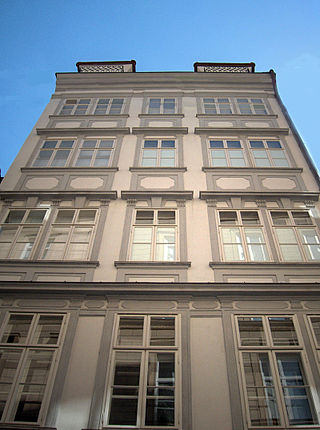
The Mozarthaus Vienna was Mozart's residence from 1784 to 1787. The building is located in Vienna's Old Town, not far from St. Stephen's Cathedral, and is his only surviving Viennese residence. It is now a museum.
Sight 22: Heiligenkreuzerhof
The Heiligenkreuzerhof is a courtyard ensemble in Vienna's city centre. It lies between Schönlaterngasse and Grashofgasse and is now surrounded by a complex of collegiate courtyard, prelature, chapel and apartment building. The two entrances at the other end of the building complex make it a passageway.
Sight 23: Jesuitenkirche (St. Ignatius)
The Jesuit Church, also known as the University Church, is a two-floor, double-tower church in Vienna, Austria. Influenced by early Baroque principles, the church was remodeled by Andrea Pozzo between 1703 and 1705. The Jesuit Church is located on Dr. Ignaz Seipel-Platz, immediately adjacent to the old University of Vienna buildings.
Sight 24: St. Barbara
The Barbara Church is the main church of the Greek Catholic Church in Austria, as well as the parish church of the Ukrainian Uniate Parish, a German-speaking Greek Catholic parish and central parish church for the other Byzantine believers in Austria. It is located in Postgasse in Vienna's 1st district, Innere Stadt.
Sight 25: Dominikanerkirche
The Dominican Church, also known as the Church of St. Maria Rotunda, is an early Baroque parish church and minor basilica in the historic center of Vienna, Austria. It is the third church built on the same site in the course of time.
Sight 26: Dominikanerbastei
The Dominican Bastion was part of the Vienna city wall as a fortification. Today, a street created in its place in Vienna's 1st district, Innere Stadt, bears this name.
Sight 27: Kabarett Simpl
The Simpl is a cabaret in Vienna-Innere Stadt, which opened in 1912 as the beer cabaret Simplicissimus. In the 1920s and 30s, he produced cabaret greats such as Fritz Grünbaum and Karl Farkas. The name, lettering and the red bulldog refer to the Munich satirical magazine Simplicissimus, founded in 1896.
Sight 28: Porgy & Bess
Porgy & Bess is a jazz club located at Riemergasse 11 in Vienna's 1st district, Innere Stadt.
Sight 29: Palais Coburg
Palais Coburg, also known as Palais Saxe-Coburg, is a palace in Vienna, Austria. It was owned by the Kohary branch of the House of Saxe-Coburg and Gotha.
Sight 30: St. Hieronymus
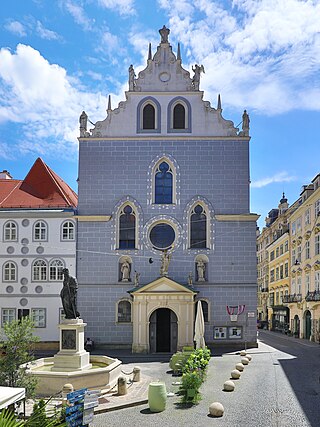
The Franciscan Church, also known as the Church of St. Jerome, is a Roman Catholic parish church dedicated to Saint Jerome and located in the historic city center of Vienna, Vienna's 1st district. It is the church of the Franciscan Order in Vienna.
Sight 31: Mosesbrunnen
The Moses Fountain is a classicist fountain on Franziskanerplatz in Vienna's 1st district, Innere Stadt.
Sight 32: Imperial Crypt
The Imperial Crypt, also called the Capuchin Crypt (Kapuzinergruft), is a burial chamber beneath the Capuchin Church and monastery in Vienna, Austria. It was founded in 1618 and dedicated in 1632, and located on the Neuer Markt square of the Innere Stadt, near the Hofburg Palace. Since 1633, the Imperial Crypt serves as the principal place of entombment for the members of the House of Habsburg. The bones of 145 Habsburg royalty, plus urns containing the hearts or cremated remains of four others, are here, including 12 emperors and 18 empresses. The visible 107 metal sarcophagi and five heart urns range in style from puritan plain to exuberant rococo. Some of the dozen resident Capuchin friars continue their customary role as the guardians and caretakers of the crypt, along with their other pastoral work in Vienna. The most recent entombment was in 2023.
Sight 33: Kapuzinerkirche
The Capuchin Church in Vienna, Austria, is a Roman Catholic church and monastery run by the Order of Friars Minor Capuchin. Located on the Neuer Markt square in the Innere Stadt near the Hofburg Palace, the Capuchin Church is most famous for containing the Imperial Crypt, the final resting place for members of the House of Habsburg. The official name is the Church of Saint Mary of the Angels.
Sight 34: Malteserkirche hl. Johannes der Täufer
The Maltese Church is a Roman Catholic Gothic church of the Knights Hospitaller in Vienna, on Kärntner Straße in the 1. Wiener Gemeindebezirk Innere Stadt.
Sight 35: Ursulinenkirche
The St. Ursula Church is a Roman Catholic church at Seilerstätte 26 in Vienna's 1st district of Innere Stadt.
Sight 36: Palais Erzherzog Carl-Ypsilanti
The Palais Erzherzog Carl is located in the 1st district of Vienna, Innere Stadt, Seilerstätte 30.
Sight 37: Witwe-von-Sarepta-Brunnen
The Widow of Sarepta Fountain is a fountain in Vienna's 1st district, Innere Stadt.
Sight 38: Ronacher
The Ronacher theater, originally Etablissement Ronacher, is a theater in the Innere Stadt district of Vienna, Austria.
Sight 39: Vogeltränke-Brunnen
The Bird Bath Fountain or the Bird Bath in the part of the Vienna City Park located in Vienna's 1st district, Innere Stadt, is one of six fountains in this park.
Sight 40: Anton Bruckner
The Bruckner Monument in Vienna's Stadtpark is a bronze bust depicting the Austrian composer Anton Bruckner (1824–1896).
Sight 41: Franz Schubert
The Schubert Monument, a statue in the Stadtpark in Vienna, Austria, is a memorial to the composer Franz Schubert (1797–1828), unveiled in 1872.
Sight 42: Minervabrunnen
The Minerva Fountain is a wall fountain located on the Stubenring in the inner city of Vienna.
Sight 43: Radetzky-Denkmal
The Radetzky monument in front of the government building at Stubenring 1 in the Austrian capital Vienna is an equestrian statue from 1892 and dedicated to the probably most important military commander of the Austrian Empire, Field Marshal Josef Wenzel Radetzky von Radetz.
Sight 44: Zollamtssteg
The Zollamtssteg – a bridge for pedestrians and cyclists – crosses the Vienna River in Vienna just before it flows into the Danube Canal and connects the districts of Landstraße and Innere Stadt.
Sight 45: Kleine Marxerbrücke
The Kleine Marxerbrücke is a bridge over the Vienna River and connects the two Viennese districts of Innere Stadt and Landstraße.
Sight 46: Hundertwasserhaus
Get Ticket*The Hundertwasserhaus is an apartment house in Vienna, Austria, completed in 1985, after the idea and concept of Austrian artist Friedensreich Hundertwasser.
Share
How likely are you to recommend us?
Disclaimer Please be aware of your surroundings and do not enter private property. We are not liable for any damages that occur during the tours.
GPX-Download For navigation apps and GPS devices you can download the tour as a GPX file.
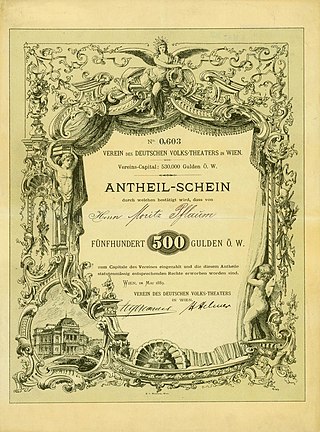
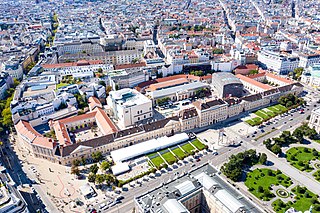
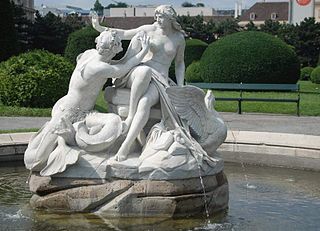
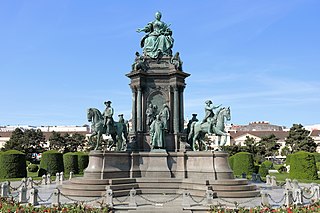
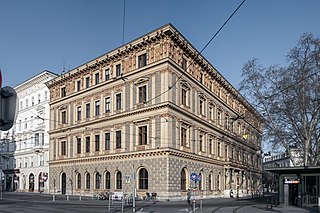
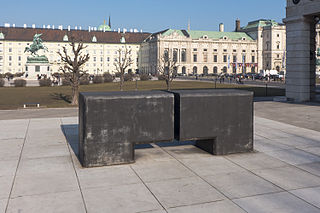
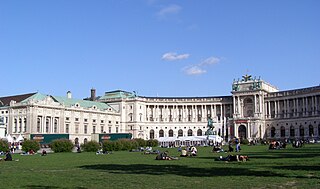
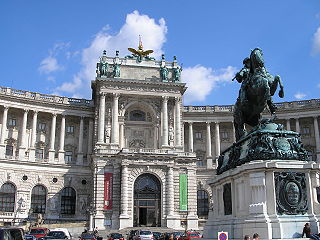
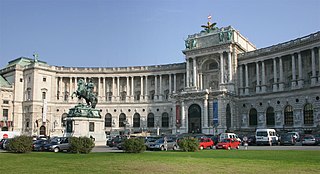

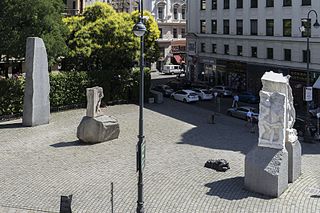
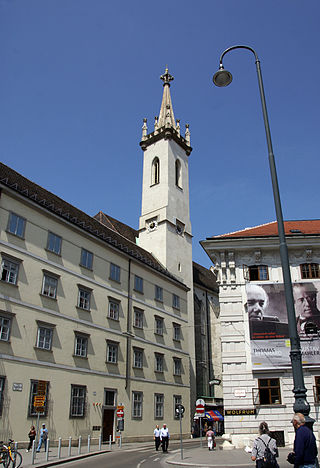

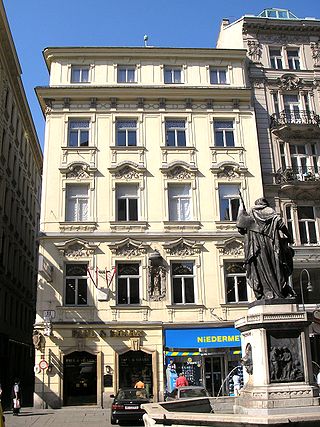
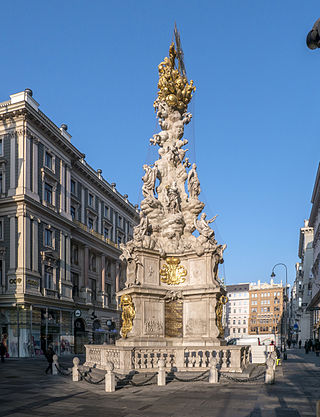
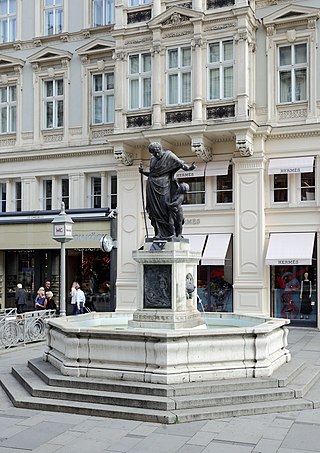
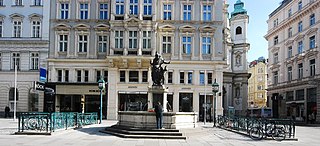
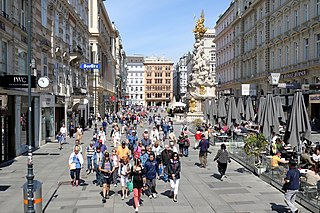
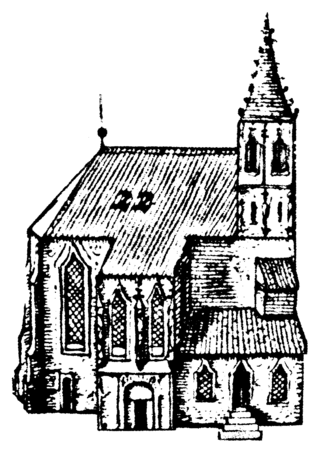
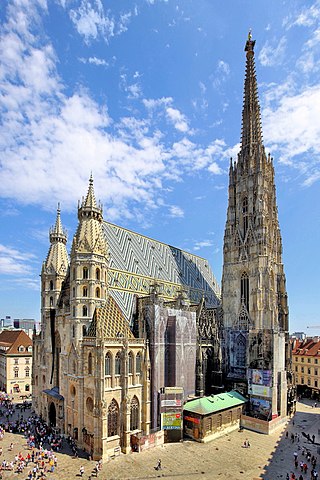
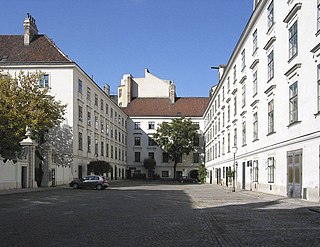
.jpg)
